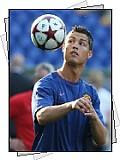Using correct and helpful vocabulary in multimedia
Anne Kellerman
One thing we try to teach in our multimedia classes is a consistent and correct set of vocabulary to use when talking about or describing multimedia. Although our set may not be a set others accept as standard or even defacto standard, at least we try to be both useful and consistent. For example, we first define multimedia as using multiple media and adding interactivity. If you just have a couple of media like audio and text without interactivity, then you have multiple media but not multimedia. As another example we recently had a student who answered a question with, "The media allows you to view different graphics of the objects and click on hot spots to see more pictures and read information." While we could possibly guess what the student meant, the answer was not acceptable. The student used media incorrectly when, in this case, he meant multimedia. While many people call pictures graphics, we distinguish between graphics, which are lines and circles and stored as equations, and images, which are stored as pixels. We do allow students to call both, pictures, but not call images graphics when they mean images and not call both generically graphics. The use of 'hot spots" is ok. However, the reader is to be warned that there is no acceptable de facto definition that relates to multimedia. If you go to Wise Geek, a hot spot is, "any public are where computers have been fitted with wireless network technology can gain access to the Internet." A geologist would tell you that it relates to mantle plumes and a tourist agent would tell you that it refers to great places to be sure and visit. There is even confusion in whether hot spot is two words or one word. Intolerable vocabulary in multimedia is random use of lower case,b, and upper case B with numbers. Our convention, which is widely accepted although unfortunately not widely used especially by students and copy editors, is lower case b means bits and upper case B means Bytes. The difference is a factor of 8. Illustrious magazines such as EE Times, Videomaker, and even Science News are guilty of occasionally making grievous errors using the wrong case of this letter. We routinely bring these examples to our students' attention with hopes of inspiring them to not do the same. Even more potential vocabulary mis-use is using Kilo, Mega, Giga, Tera, and Peta words in conjunction with numbers. A common multimedia question could be to determine the number of seconds needed to transmit 8 Terabits over a 2 Gigabit/second link. Unfortunately, not even the teacher remembers that Tera over Giga is Kilo. The answer to this dilemma which we encourage our students to do is to not use these vocabulary words but instead to write numbers using the E notation.
The copyright of the article Using correct and helpful vocabulary in multimedia in Multimedia Education is owned by Anne Kellerman. Permission to republish Using correct and helpful vocabulary in multimedia in print or online must be granted by the author in writing.Read more at Suite101: Using correct and helpful vocabulary in multimedia http://www.suite101.com/article.cfm/multimedia_education/118790#ixzz0hARaOvkK
Subscribe to:
Post Comments (Atom)

No comments:
Post a Comment